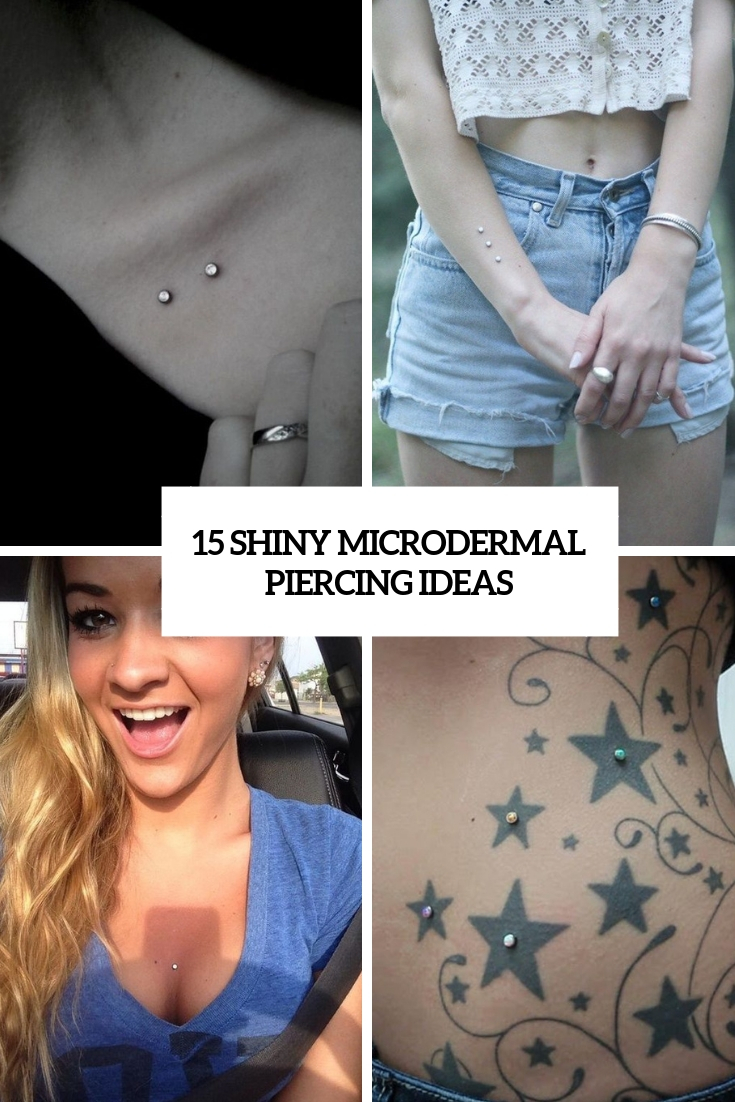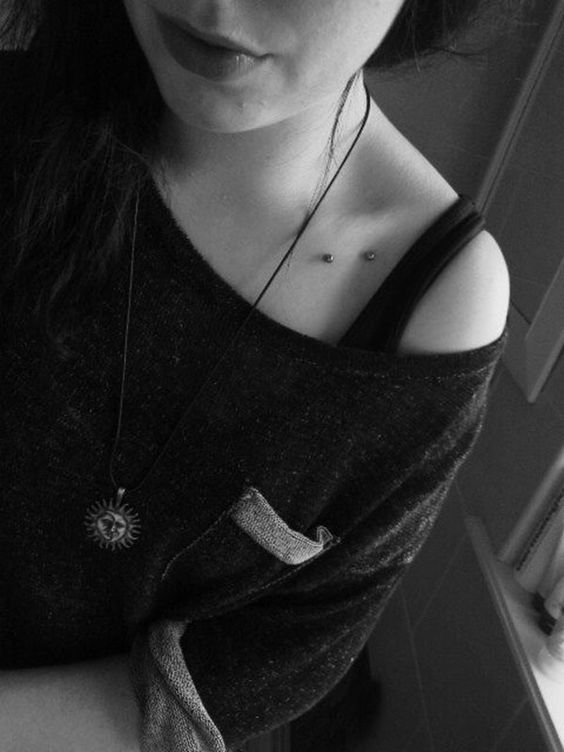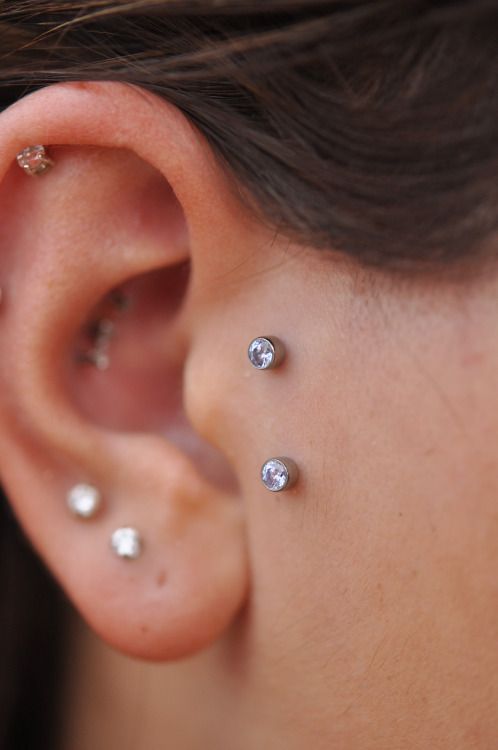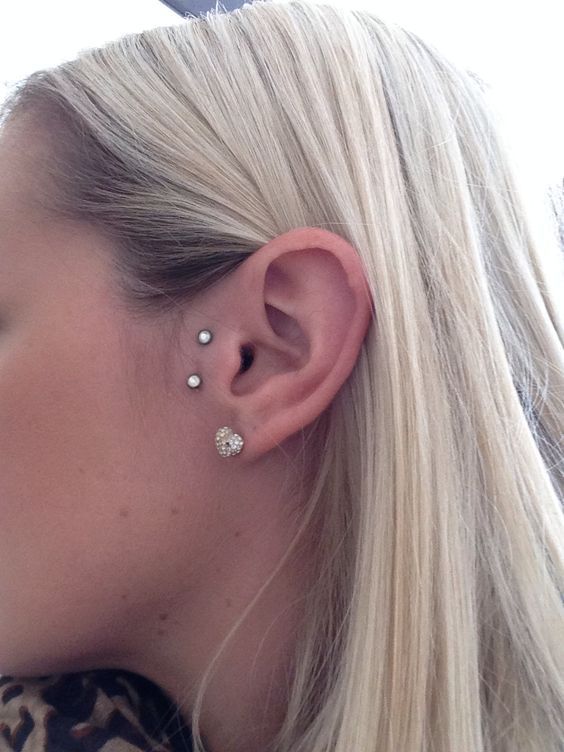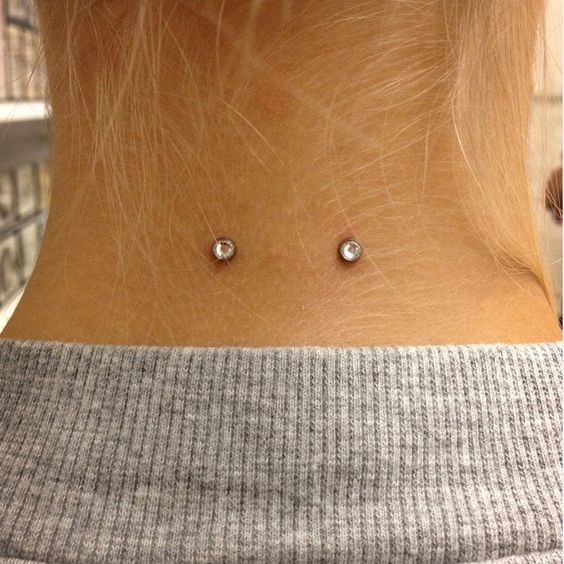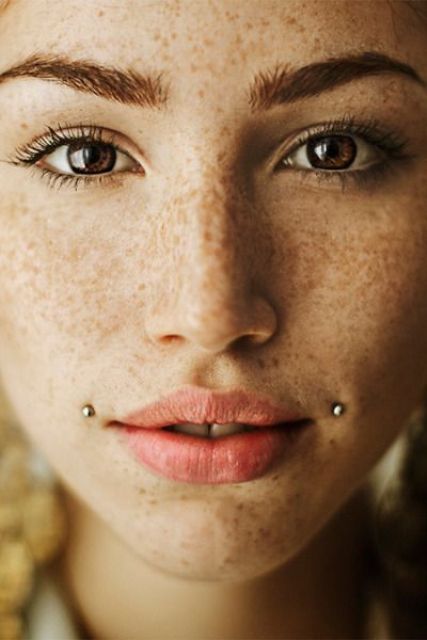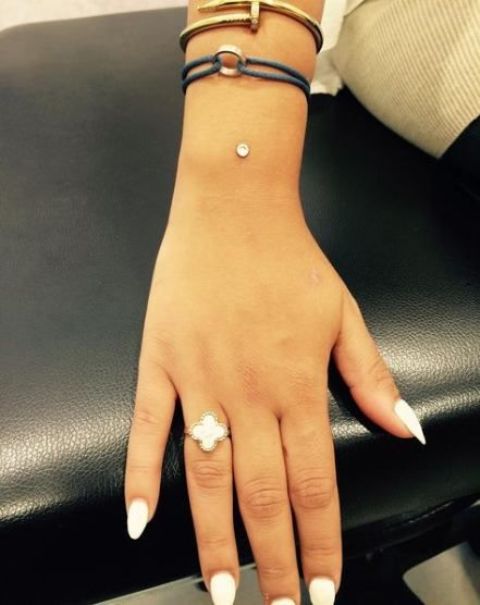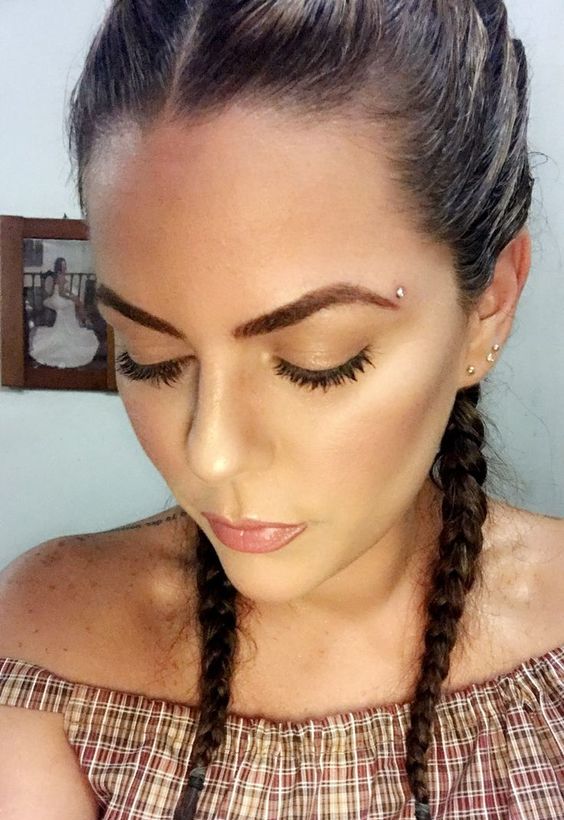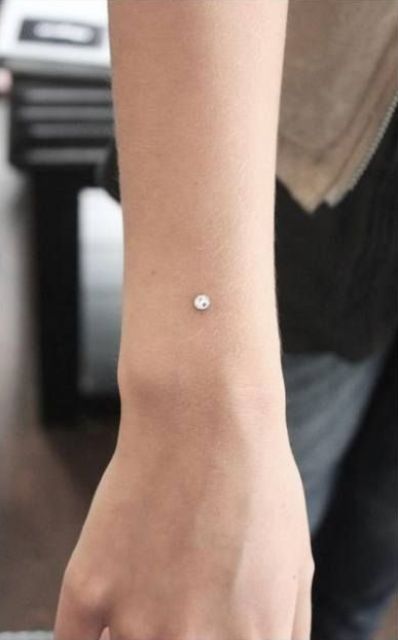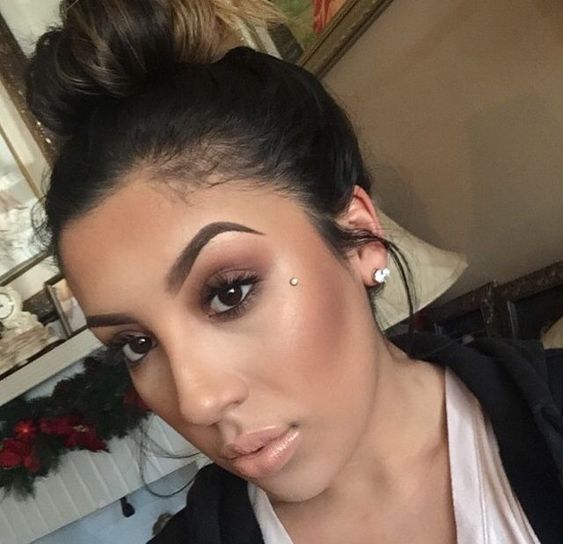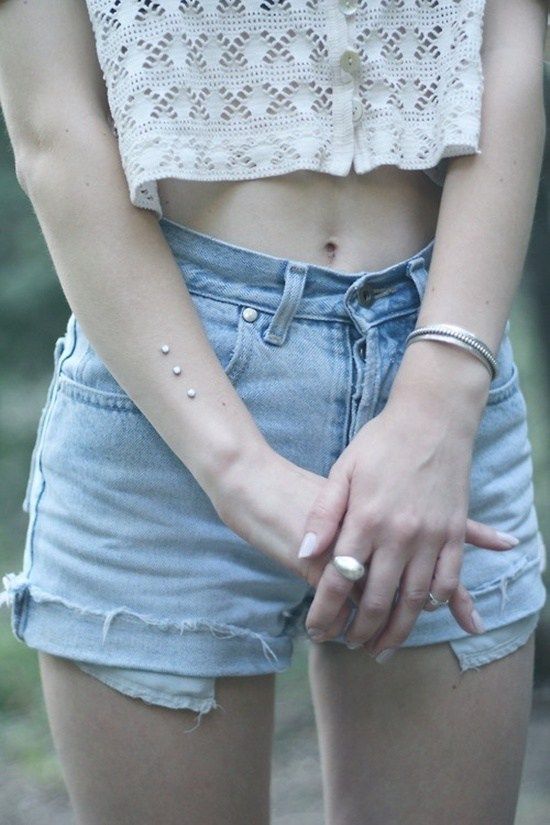Dermal piercings are single-point surface piercings, unlike traditional piercings that go in one side of your flesh and out the other. To place a dermal anchor, a piercer uses a dermal punch to remove a small circle of flesh. The anchor may have a footed base or a small, round base to help secure the dermal anchor in place. Some dermal anchor bases are solid and some have holes in them so that tissue can grow both up through the holes and around the outside of the base as the dermal piercing heals, making the piercing more stable and secure over time.
Pros And Cons
The coolest thing about dermal piercings is that they can be placed nearly anywhere on the body. You can accent a tattoo, any part of your body, even an eye, the possibilities are almost endless!
The only downside to dermal piercings is that they are very prone to migration and rejection. It’s easy to bump a dermal piercing or catch it on your clothes and dislodge it. But if you practice good dermal piercing aftercare and protect your piercing to the best of your ability, especially during the early days of the healing process, nothing will happen. Get inspired!
A wrist accented with a large dermal piercing is a bold and shiny idea that you don't expect to see.
